(Adam Intro) Welcome to KSL Outdoors, I’m Adam Eakle and welcome to Northern Utah. You know for the first time ever I’ve drawn an antelope tag in Utah. I’ve had a few hunts in Wyoming but never here in my home state. Hoping to get the biggest buck possible so I’ve started scouting, it’s early August and with the help of my dad and some of my buddies who have more experience with antelope than I. I’m hoping to bag a big one.
(adam) I remember growing up that was some of the first hunting I ever did. (dad) Well it was because the deer hunting at that time was not very good. I think my brother in law at that time Maver Gatehouse he got me started and from then on I decided it was a good thing to go and I used to go with my buddies but my buddies didn’t want to let me take my sons, so I said the heck with those guys and I started taking my two sons. (adam) and we shot a lot of antelope? (dad) yes we did.
Some of my fondest memories outdoors with my dad is hunting pronghorn in Wyoming. We never came home with giant bucks, but we did fill the freezer.
(Roy Eakle) yes we did and it’s very tasty. It’s a dark meat. A lot of people think it’s extra strong but I kind of like strong meat so I enjoy it.
This year I drew the Cache, Rich antelope buck tag at the Western Hunting and Conservation Expo. According to some, this used to be a great unit, but this year they haven’t seen any big ones, but my dad and I are sure seeing a lot of pronghorn.
(Adam) I’m using my Vortex 85 HD spotting scope and I think I’ve shown you this, it’s an adaptor from Scopecam adaptor that I got from the tines up boys. What you do is you attach your camera right to your spotting scope and get some great video, let me show you some of the video of some of the bucks we’ve seen.
(Roy Eakle) right here i’ve seen more bucks in one group than I’ve ever seen in my life. And they were big ones, so I was quite impressed.
(Adam) Well as you can see some of those bucks are dang nice. I’m just not sure which one is going to be the one I want to hunt come September. I’m going to go to my buddy Pepper Murray who i’ve been guiding elk hunters with for about five years now. He’s guided numerous antelope hunters and I think has taken about five book bucks. He’ll know a lot better than I will.
(pepper) I’ve killed about 8 book bucks and guided several others.
Pepper Murray is one of the best antelope hunters and guides I know. Take a look at this monster 87 inch buck he took this year in Utah. If anyone was going to give me sound advice. It’s going to be pepper.
(Pepper Murray, Antelope guide) In my 14th year of antelope hunting. I would qualify i think as an antelope addict. It’s kind of my passion, because it’s the most difficult animal that I hunt to judge. You know the size of a buck, elk, a lot of people can do that, deer a lot of people can do that, antelope it’s really difficult to do, to judge how, what quality of animal you are looking at.
(Pepper) I love it cause you can hunt them all day long and they are just more fun than heck..
(pepper) the easiest way to judge an animal, a buck. You think they are the fastest animal in North America, miles per hour. Mass, so M is mass, P is prong length, H, is height. So mass is the most important, prong length is the second most important. Height is the third most important. You don’t get any any credit for width on an antelope, it can be a deduction if it’s too wide. If the width is wider than the horn then you get a deduction on the net score.
(pepper) the rules of sixes. If you have 6 inches of mass, 6 inch prongs and 16 inch tall you are going to have an 80 inch buck. So that’s kind of a base line to look for and trying to judge what’s 6 inches is what for circumference, what prong length is and.
(pepper) what a 16 inch horn is height wise.
(pepper) it’s a great unit. (adam) well don’t make my expectations too high. (laughs) they’ve harvested some great bucks in the last 3-4 years that I’ve heard about, all in the mid-eighty range which is a huge antelope for northern Utah and I think you should be loosing some sleep at night waiting for that day to come. You are doing your homework, trying to educate yourself and I think you should have a great hunt.
Now the only thing left to do is practice at the range and get ready for my hunt. That just ahead, but first tonights quiz question on…well of course the pronghorn.
*************************************************
(Adam) alright Kregg how far is that? (kregg Thomassen) that target is 549 yards.
My friend Kregg Thomassen works for Gunwerks, a rifle company that specializes in teaching accurate long range shooting. I do most of my hunting with a bow or muzzleloader and only feel comfortable out to about 300 yards with a rifle. Kregg says he’s going to show me that with their system I can shoot accurately up to five, even seven hundred yards.
(Kregg Thomassen, Gunwerks “1000 yards out of the box”) What we’ve got here is a 6XC, it shoots a little tiny fast bullet, this little 115 grain bow tail, hollow point design and really high ballistic coefficient so it cuts through the air nice. really, really accurate and even a guy like you can hit an antelope at 4 or 500 yards with this simple system. (adam) alright lets practice.
The target is this steel dong, dial up the yardage, adjust for the wind and let her fly.
(adam) alright here we go. (kregg) alright (shot) (kregg) did you see how it tipped over forward, that means you hit it. (adam) Nice.
550 was a breeze, I even hit a target at 980 yards. This Gunwerks system is pretty impressive.
(Adam) Alright we’ve got the gun, the orange. We are just waiting for my buddy Randy to show up. The sun is coming up, looks like it’s going to be a beautiful day, see if we can find a goat. You know even though this gun can shoot, as I just showed you 980 yards. The goal today is to get as close as possible. I’d really like to make a three to four hundred yard shot.
(adam) “it’s kind of like a bow, you know even though you can shoot 90, even a 100 yards at a target. It’s a little different when you are shooting at an animal and there’s my buddy Randy.
In the three scouting trips I took on the unit, I never found a giant. I did see some really nice bucks and quite a few of them.
This wide buck is on my short list. Randy and I find him right off the bat at 200 yards. Both of us have clients coming in to hunt elk and only have the day to hunt, I decide to keep looking and let him go.
(Scott Mcfarlane) I think I had five points. (adam) five points
DWR biologist Scott McFarlane also drew the tag, brought his family out and says with the amount of public land on this unit, it’s a good tag to have.
(Scott McFarlane, DWR Wildlife Biologist) We’ve had a population boom up here and so they are issuing additional permits and this is a very good unit, Northern Utah is doing really well for antelope.
(Adam) so we’ve looked at probably thirty, forty bucks this morning and had a little cattle drive over here. Had to help the farmer get his cattle across the road. Kind of decided that this wide buck, this one here that I’ve got video of is not a bad buck and we’ve only got today to hunt so we’ve got to get something down. We are going to see if we can find him, take another look at him. If he’s good enough we are going to take him. But now we’ve got to find him again.
and wouldn’t you know it, we can’t re-locate the wide buck.
[Notes:Good buck on 367 at 22:38]
Randy does find this buck at just 70 yards, but again, I pass. It’s late in the day and our time is running out.
(Adam) Ok so, we found a good goat, he’s not the wide goat, but he’s a good representative. We’ve got one day, I’m going to go ahead and fill the tag with him. He’s about 350 yards is all so, not bad, I’m going to slide up this ridge, nice easy shot, get the rifle on the ground, with my shoulder on the ground. Should be a good shot.
(Adam) there’s three of them. Is it the left one? He’s ok.
(adam) it’s not a great shot is it? (randy) Not right now, no.
Both of these bucks are about the same size. I finally decide to take the one that presents the first broadside shot. I won’t lie my nerves are getting the best of me.
(Randy ‘Mort’ Lamborne) If you can hit him there, take him.
(Adam) In three. (shot) (adam) did I hit him? (randy) no! (adam) you’re kidding me? (buck falls) (adam) did I hit him, no! (randy) good job. (adam) thought I missed.
(Randy ‘Mort’ Lamborne) he’s a great antelope. (adam) oh he’ll be nice, nice buck. Boy that gun sure makes it easy. Piece of cake shot with the ol’ Gunwerks. If you can see me right now I’m actually shaking a bit. When I quite shaking, I’ll stop hunting. (randy) that’s right.
(Randy ‘Mort’ Lamborne) Yup we definitely saw bigger bucks today, but. (adam) It was a good shot, 375 I think, no 275. (randy) 273. (adam) 273, came a little closer. We are going to go check the buck here in a minute but first lets head back to Salt Lake to the guys at Fish Tech.
*******************************************************
(Intro) Welcome back to KSL Outdoors, I’m Adam Eakle back here in Northeastern Utah. You know the pronghorn we have down is a nice representative, but a lot of people don’t like to eat pronghorn meat and sometimes that depends on how you take care of the meat in the field. So tonight Mort and I are going to show you how to quarter this animal, how to get it on ice and how to do it without gutting it.
(Adam) So first off get the animal into the shade like we’ve done here. Now we are going to take a cut right down the back of the buck, just below his antlers to about his mid body section and then we’ll take a cut down to his belly and then we’ll go ahead and start caping him.
The goal is to get the meat away from the hot visceral insides as soon as possible. You start your first caping cut right at the Atlas joint, just below the horns, between the ears. Always cut with the hair to avoid dulling your knife and this will also dislodge less hair on the cape.
(Adam) so as you are caping this out, try and get some of the meat off the hide. So your taxidermist doesn’t have a lot of meat hanging on it. It will make him a lot happier.
(adam) so now we’ve got this part of his cape off, we are now going to pull his front shoulder off. Really simple, just lift the leg up, if you have an elk, there’s the shot right there. You have someone pull that for you. And that left shoulder, you’d be surprised how little holds that on.
(Adam) and there you go, front shoulder off. Little bit blood shot, but we are going to take it because there is still some good meat there.
(Adam) so we are going to immediately get that quarter in a bag, we’ve got ice here that we’ve brought and one down, three to go.
Your caping job on the hind quarter doesn’t need to be as precise. Just get the hide off as fast as possible.
(Adam) From talking to conservation officers, this is something a lot of people forget. Remember you have to leave evidence of sex on the largest portion of meat on the animal. So in this case we are going to put it on the hind quarter right here. Just cut a piece off and leave it attached to that hind quarter.
Remove the hind quarter by finding the ball and socket joint near the pelvis. Cut around the joint, and get the quarter in a bag and on ice. Now you can remove the back straps, neck meat and anything else that looks edible remaining above the ribs and neck area. Flip the animal over and repeat the process on the other side.
(Adam) Ok so a lot of people want to know how to get the loin. Basically you come to the very last part of the ribs, the ribs end right here. The loin is going to be right in this section, inside. So we are going to take a cut underneath and there it is right there.
This is usually the hardest part, finding the fillet and not puncturing the entrails. Take your time, you don’t want to spoil the meat. Finally to get your hide and head off the carcass, find the atlas joint between the ears and cut down through the neck.
(Pepper Murray) A lot of people don’t like to eat antelope because the traditionally they treat them like a deer or elk or they leave the hide on and hang them. You know thinking they are going to tenderize the meat or whatever they think, but if you can get the hide off an antelope, get them cooled real fast. I carry big coolers in my truck with ice and so i cape and quarter, get the quarters in the ice right away and my kids will eat an antelope over elk any day.
(Adam) and one last thing. Don’t forget if you draw a limited entry tag, once in a lifetime tag or a CWMU tag. You have to take these lower two teeth of your animal and submit it back to the Division of Wildlife Resources. If you don’t do that, they will charge you fifty bucks or they won’t even allow you to put in for next years draw. Time now to dive into tonights Utah Field Guide.

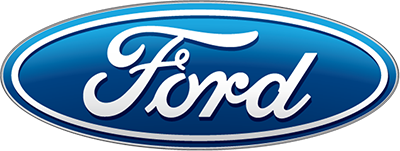
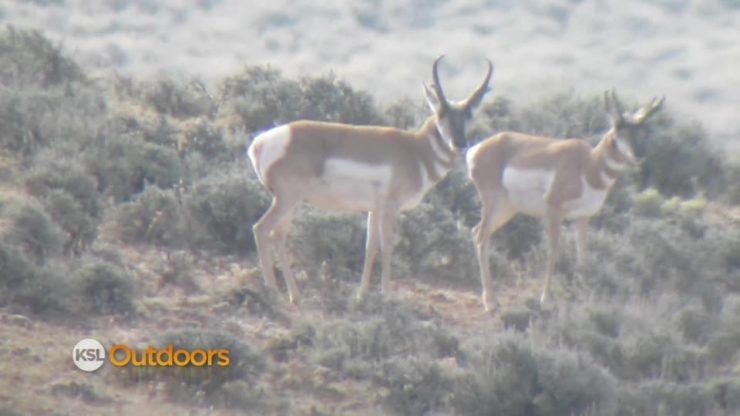
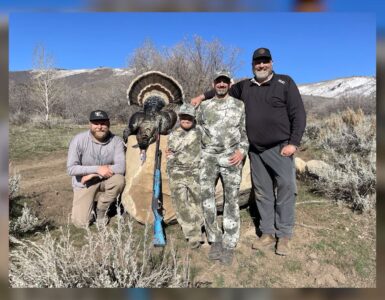
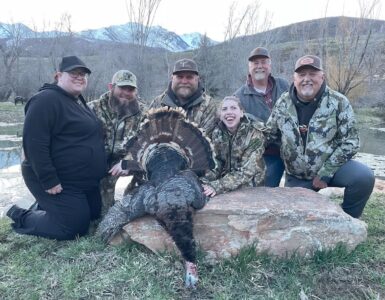
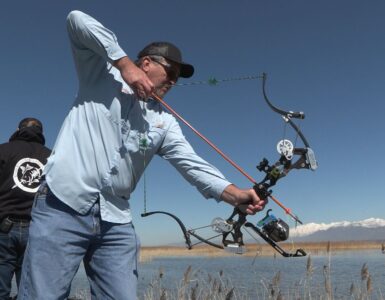










Add comment